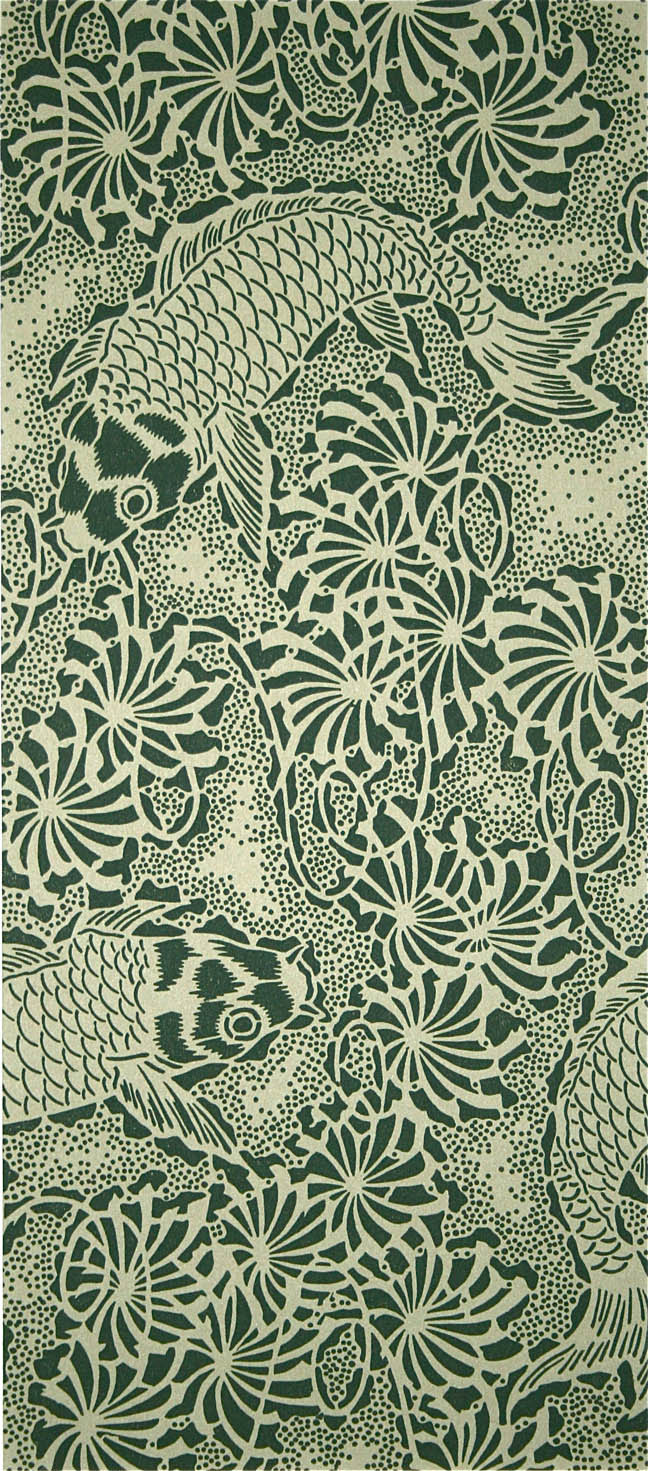

Title: Silk Screen wallpaper sample from the 1920s 1930s
Shipping: $18.00
Artist: N/A
Period: 20th Century
History: N/A
Origin: N/A
Condition: Excellent
Item Date: 1920 to 1930
Item ID: 2173
This silk screen wallpaper sample design was produced somewhere around the 1920s or 1930s, but could well have been produced by any number of French interior accessory manufacturers and retailers. Wallpaper design in France during the decade of the 1920s has got to be seen as one of the high points in the history of wallpaper. Patterns tended to be large, bold and extremely colorful. This period was not one for subtlety and did not have time for the minimal exaggerations and affectations that we live with today. Interiors were meant to be joyous and positive, and were seen, along with many other aspects of life, as a counter to the long trauma that had been the First World War. France had a whole generation of new designers who were taking the subtle floral aspects of Art Nouveau, massively and aggressively expanding them into new and exciting forms that seemed to bare little or no relationship to the pre-war design style that had dominated both Europe and North America. This new, powerful twist on the old Art Nouveau theme, was to become known much later as Art Deco, but was seen by many at the time as a natural progression of the old Nouveau style, not necessarily as an entirely different movement altogether, something we tend to forget nowadays. It is not the first time that designers had wished to push the constraints of a previous style. It is partly the function of fashion to move away from the comfortable and acceptable norm and to push the edge of the known. This has been the case throughout the history of interior design and decoration. Sometimes however, the movement for change is much more dramatic and pressing, as was the case in the 1920s. The result of the First World War was seen by many not as a return to the status quo, but as a catalyst, one that would turn the long and to many, stifling world of the Victorians upside down. Many, in fact, blamed the War on the old order which they saw as intransigent and fossilised, cemented into a system that was seen now as defunct or at least seriously dysfunctional. If ever there was a need for dynamic change, this seemed to be it.
Link: http://en.wikipedia.org/wiki/Wallpaper
Wallpaper is a kind of material used to cover and decorate the interior walls of homes, offices, and other buildings; it is one aspect of interior decoration. They are usually sold in rolls and are put onto a wall using wallpaper paste. Wallpapers can come either plain (so that it can be painted), or with patterned graphics. Wallpaper printing techniques include surface printing, gravure printing, silk screen-printing, and rotary printing. Mathematically speaking, there are seventeen basic patterns, described as wallpaper groups, that can be used to tile an infinite plane. All manufactured wallpaper patterns are based on these groups. A single pattern can be issued in several different colorways. Wallpaper, using the printmaking technique of woodcut, gained popularity in Renaissance Europe amongst the emerging gentry. The elite of society were accustomed to hanging large tapestries on the walls of their homes, a tradition from the Middle Ages. These tapestries added colour to the room as well as providing an insulating layer between the stone walls and the room, thus retaining heat in the room. However, tapestries were extremely expensive and so only the very rich could afford them. Less well-off members of the elite, unable to buy tapestries due either to prices or wars preventing international trade, turned to wallpaper to brighten up their rooms.